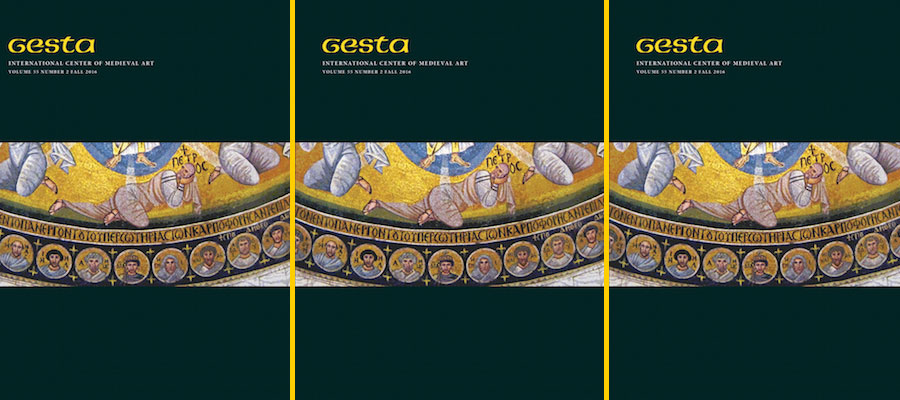Sean V. Leatherbury. “Reading and Seeing Faith in Byzantium: The Sinai Inscription as Verbal and Visual 'Text'.” Gesta, volume 55, no. 2 (Fall 2016): pp. 133–156.
Inscriptions were a significant—and significantly visual—form of religious, political, cultural, and social display in the early Byzantine period, but scholars have paid little serious attention to the ways in which viewers read and looked at inscribed prose texts that are composed primarily of formulaic phrases. This article analyzes one such Christian inscription, the Greek dedicatory text written in mosaic in the apse of the main church of the Monastery of St. Catherine on Mount Sinai, in its religious, political, and visual contexts. By comparing the text with similar inscriptions and other types of texts in the region, including saints’ lives, legal papyri, and the liturgy, and by reading and seeing the text as part of the famous mosaic of the Transfiguration with which it is paired, the article demonstrates the visual and verbal powers of the formulaic inscription, uncovering embedded layers of meaning. The text acted simultaneously as a sacred and a political seal on the building, protecting the faith of the Church and “branding” the monastery church as part of the larger religious agenda of the emperor Justinian. Analysis of the contemporary reception of the apse mosaic suggests that the inscription was read in the period as inextricable in content, form, and visual function from the mosaic image.
